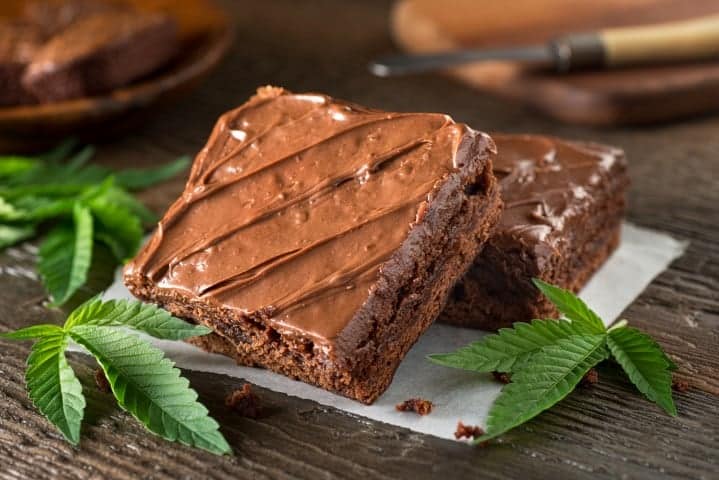The trend of incorporating hemp ingredients into everyday foods, especially bakery products like bread, is on the rise. But what actually happens to cannabinoids—compounds like CBD and THC—during the baking process? A new study conducted by researchers from the German Federal Institute for Risk Assessment (BfR) provides the first systematic scientific insight into the stability and transformation of cannabinoids in hemp-containing breads.
Understanding Cannabinoids in Hemp-Based Foods
Hemp (Cannabis sativa L.) is a source of over a hundred different cannabinoids, including cannabidiol (CBD) and delta-9-tetrahydrocannabinol (Δ9-THC). While CBD is non-psychoactive and often promoted for its potential health benefits, Δ9-THC is known for its psychoactive effects and is strictly regulated in the European Union.
Cannabinoids occur in hemp plants primarily in their acidic forms (e.g., CBDA, THCA), which are not psychoactive. Through heat exposure—a process known as decarboxylation—these acids transform into their neutral, bioactive counterparts. This chemical conversion plays a crucial role in determining the final cannabinoid profile of processed foods like bread.
The Study Setup: Testing Dough and Commercial Products
To evaluate how baking impacts cannabinoid stability, researchers analyzed 31 commercial hemp bakery products and 72 model breads baked under controlled laboratory conditions. Each bread sample was prepared using a standard rye-wheat recipe with and without the addition of 10% hemp seeds.
Using a high-precision method—liquid chromatography-tandem mass spectrometry (HPLC-MS/MS)—they quantified 19 different cannabinoids. The model breads were baked at three temperatures (180°C, 220°C, 260°C) and three time intervals (40, 50, 60 minutes), allowing for a full factorial analysis of temperature and time effects.
Market Findings: Low THC Levels, Wide Variation in Cannabinoid Content
Among the commercial samples, total cannabinoid levels ranged from 68 to 4603 μg/kg (fresh weight), with an average of 1170 μg/kg. Importantly, Δ9-THC content stayed well below the EU’s legal threshold of 3.0 mg/kg for hemp seeds. No samples contained the psychoactive Δ8-THC or synthetic variants such as hexahydrocannabinol (HHC).
The researchers also calculated a phenotype ratio (PR)—the balance of psychoactive to non-psychoactive cannabinoids. Most products showed a PR far below 1, confirming the use of industrial hemp. However, a few products had ratios approaching or exceeding 1, suggesting potential contamination or the use of non-approved hemp varieties.
Baking Changes Cannabinoid Profiles—but Not Drastically
One of the study’s key conclusions was that while baking does impact cannabinoid content, the overall change in total cannabinoids was modest. In extreme cases, the total cannabinoid content decreased by up to 26%. Δ9-THC levels showed either a slight reduction or, in some conditions, even an increase of up to 55%, attributed to the thermal decarboxylation of THCA.
The most noticeable transformation was the steady reduction in the acid-to-neutral cannabinoid ratio (A/N), which declined consistently with increased baking time and temperature. This aligns with the decarboxylation hypothesis: heat converts acidic forms like THCA and CBDA into their neutral forms—Δ9-THC and CBD.
Crust vs. Crumb: Temperature Gradients Matter
Breads were also analyzed separately by crust and crumb. The crust, exposed to much higher temperatures (up to 220°C), showed more pronounced cannabinoid changes than the crumb, which stays around 98°C. Decarboxylation was more efficient in the crust, where acidic cannabinoids dropped more significantly and neutral forms rose more sharply.
This supports earlier research indicating that THCA and CBDA decarboxylate most effectively between 130–160°C. In this study, crusts baked at 260°C for 60 minutes still retained 31% of their acidic cannabinoids—suggesting that decarboxylation in bread matrices is slower or less complete than in oils or plant material.
Do Cannabinoids Disappear? Not Exactly
The study considered several possible explanations for cannabinoid loss during baking. Evaporation was ruled out due to the dense structure of bread and low volatility of cannabinoids. Instead, chemical binding to the food matrix or degradation into unknown byproducts may explain the reduction.
Unlike oils, bread’s solid matrix may hinder molecular mobility and expose cannabinoids to unique chemical environments involving proteins and carbohydrates. Future studies using high-resolution mass spectrometry (HRMS) are needed to identify any transformation products that fall outside the current analytical scope.
Safe to Eat: Regulatory and Health Implications
Despite the changes observed during baking, all measured Δ9-THC levels in commercial products were far below the legal safety limits. Even in the most THC-rich product, a person would need to consume over 1.8 kg of bread to exceed the European Food Safety Authority’s acute reference dose (ARfD) of 1 μg/kg body weight.
In short, hemp breads on the market appear safe for consumers, with negligible psychoactive potential. The study’s findings provide reassurance for both regulatory authorities and the growing number of hemp-curious consumers.
Read More from The Cannex:
- Cannabis Users Are Healthier Than Expected, New Exercise Study Finds
- Cannabinoid Gold Nanoparticles Show Promise in Cancer Treatment
- Genetic Markers Behind Cannabinoid Production Discovered in Cannabis Plants
FAQ
What happens to cannabinoids like THC and CBD during bread baking?
During baking, acidic cannabinoids such as THCA and CBDA undergo decarboxylation, converting into their active forms—THC and CBD. The extent of this transformation depends on temperature and time.
Are hemp breads psychoactive?
No. The study confirmed that commercial hemp breads contain very low levels of Δ9-THC, well below regulatory limits. They are not capable of producing psychoactive effects.
Does the bread’s crust have more cannabinoids than the crumb?
The crust shows a higher degree of decarboxylation due to higher temperatures, leading to increased levels of active cannabinoids like CBD. However, total cannabinoid content is similar between crust and crumb.
Is it safe to eat hemp bread regularly?
Yes. Even in the highest-tested samples, you would need to consume over a kilogram of bread in one sitting to exceed safe THC intake levels. The breads tested in the study pose no health risk based on current EU guidelines.

